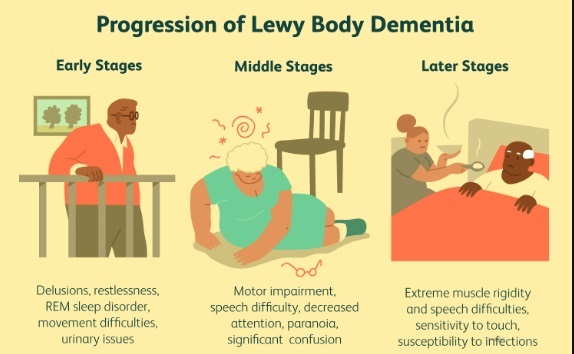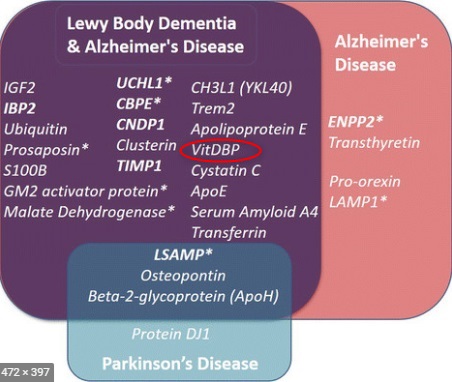Lewy Body Dementia (Robin Williams) and low Vitamin D
See also Vitamin D Life
Robin's Wish - Movie Sept 2020
‘Robin’s Wish’ erases the sad clown trope around Robin Williams’s death
Includes link to the video trailer
"“He never got bitter,” Norwood continues. “He never got angry. Robin Williams wasn’t the guy who was going to go burn down the neighborhood the last night he was alive because he felt like things were unfair. He went and asked for a hug from one of his close friends. He said goodnight to his wife. And he realized that there just wasn’t much left on the earth for him. He was about two weeks from going into an inpatient program that he likely never would have come out of . And that’s just not how the guy wanted to live.”
Lewy Body dementia is associated with muscle spasms – low Magnesium/Vitamin D? - 2012
Dementia with Lewy bodies: the principles of diagnostics, treatment, and management.
Medicina (Kaunas). 2012;48(1):1-8.
Macijauskien? J, Lesauskait? V.
Department of Geriatrics, Medical Academy, Lithuanian University of Health Sciences, A. Mickevi?iaus 9, 44307 Kaunas, Lithuania. [email protected]
Dementia with Lewy bodies was first recognized as a separate entity about 30 years ago. The prevalence varies from 0% to 5% in the general population, and this disease accounts for 0% to 30.5% of all dementia cases .
Dementia with Lewy bodies is considered the second most common cause of degenerative dementia after Alzheimer's disease.
The disease is characterized by alpha-synuclein immunoreactive protein deposits in both neurons and glial cells. The protein deposits are especially prominent in dopaminergic neurons, where they can be detected using conventional histological stains, such as hematoxylin and eosin, and are commonly referred to as Lewy bodies.
The diagnosis of dementia with Lewy bodies is based on the presence of dementia as well as 2 of the following 3 core diagnostic features:
1) fluctuating cognition,
2) visual hallucinations, and
3) movement disorder.
Diagnostic tests include laboratory data, structural and functional imaging, and electroencephalography. Differential diagnosis of dementia with Lewy bodies focuses on other later life dementia syndromes, other parkinsonian diseases (Parkinson's disease, progressive supranuclear palsy, corticobasal degeneration), and primary psychiatric illnesses. There is type 1b evidence to support treatment with cholinesterase inhibitors. Glutamatergic and dopaminergic therapies are used as well. Standard neuroleptics are contraindicated, and atypical agents should be used cautiously. Nonpharmacologic measures - therapeutic environment, psychological and social support, physical activity, behavioral management strategies, caregivers' education and support, and different services - could be suggested.
PMID: 22481369
PDF is attached at the bottom of this page
66+ Vitamin D Life pages with DEMENTIA in title
This list is automatically updated
{LIST()}
Type of Dementia - by Perplexity AI June 2024 (Note Lewy body dementia has day to day variability)
The type of dementia can significantly influence the daily variability of symptoms. Here's how different types of dementia affect symptom fluctuations:
- Lewy body dementia: This type of dementia is known for its pronounced day-to-day variability in symptoms . Patients with Lewy body dementia often experience fluctuating levels of attention and alertness that can vary significantly from one day to the next. This variability is a hallmark feature of the condition.
- (perhaps President Biden has Lewy body dementia)
Alzheimer's disease: While Alzheimer's symptoms generally progress gradually, there can still be some variability in the early stages. However, the fluctuations are typically less dramatic than those seen in Lewy body dementia.
Vascular dementia: This type of dementia, caused by problems with blood flow to the brain, may show a more stepwise progression of symptoms. While day-to-day variability might be less pronounced, symptoms can worsen suddenly after events like small strokes.
Frontotemporal dementia: This less common form of dementia tends to affect behavior and language more than memory in its early stages. The variability of symptoms may depend on the specific areas of the brain affected.
Mixed dementia: When a person has more than one type of dementia, the variability in symptoms can be more complex, potentially combining characteristics of the different types involved.
It's important to note that regardless of the type of dementia, there tends to be some variability in a person's presentation from day to day, with periods of lucidity alternating with periods of confusion. However, the extent and nature of this variability can differ based on the specific type of dementia.As dementia progresses to later stages, symptoms generally become more severe and consistent across all types, with less day-to-day variability. Sudden, dramatic changes in condition over a short period might indicate a separate health issue rather than typical dementia progression.Understanding these differences in symptom variability can help caregivers and healthcare providers better manage care and recognize when changes might warrant further medical attention.
Vitamin D Life - Cognitive category contains
{include}
See also web
Lewy Body Demential association not much on Vitamin D and LBD
“What is Lewy body dementia and how is it treated?” – UCSF webinar notes March 2020
"“Lewy body dementia” is an umbrella term that includes dementia with Lewy bodies and Parkinson’s disease dementia. The MAC has different webpages on these two disorders:..."
Many videos and descriptions
A Form of Dementia That Is Often Misdiagnosed New York Times – Sept 2012
About 1.3 million Americans
Frequently misdiagnosed as Alzheimer’s or Parkinson’s disease
At a minimum, cognitive decline that doesn’t take the classic form of memory loss is a cue
Lewy body dementia seems to progress more rapidly than Alzheimer’s; most patients don’t live as long with it
PubMed Lewy and Dementia in title 2807 items as of June 2024
LBD Progression Nov 2019
 *
*LBD Venn - note the VDBP connection Dec 2015

